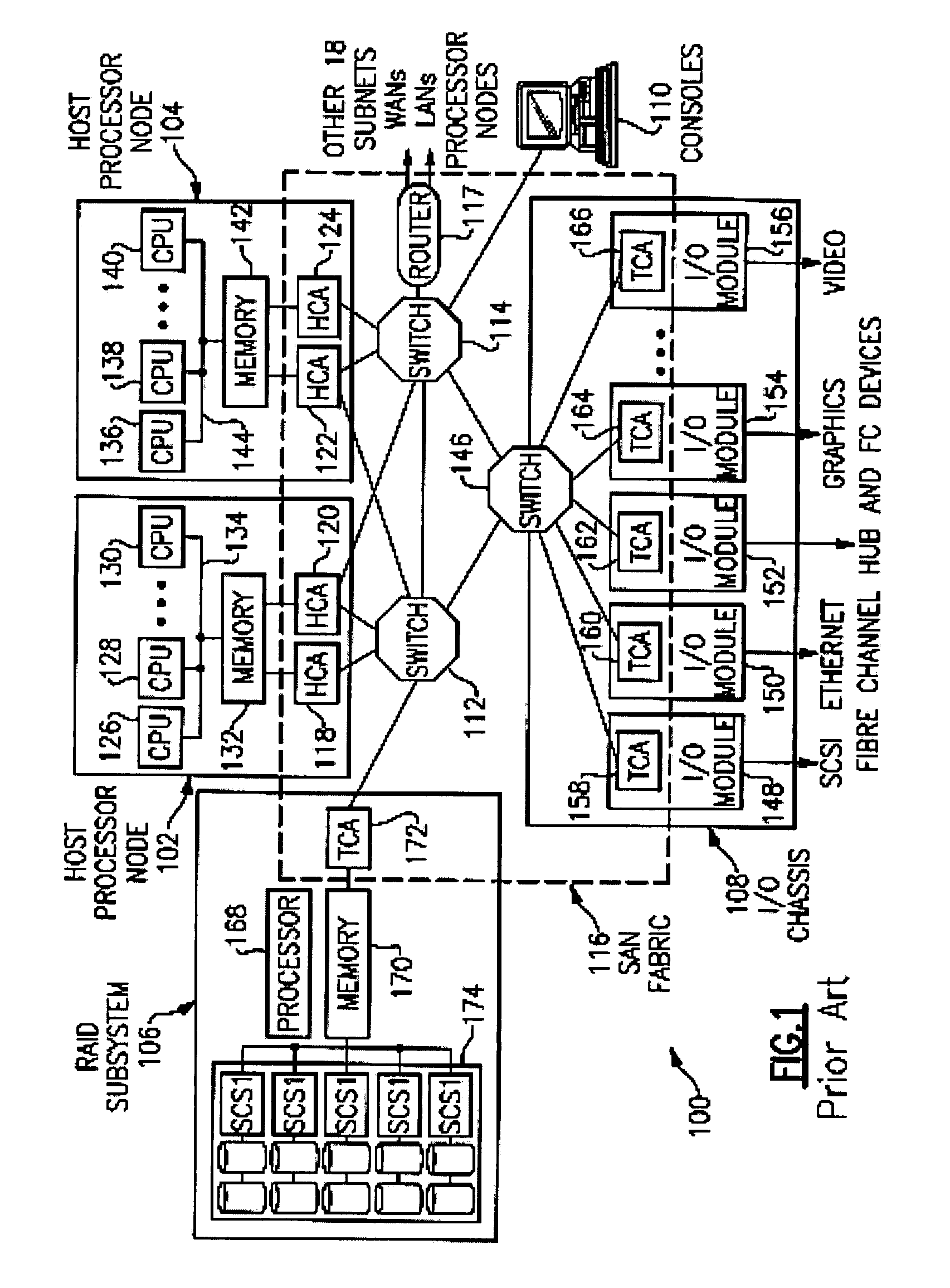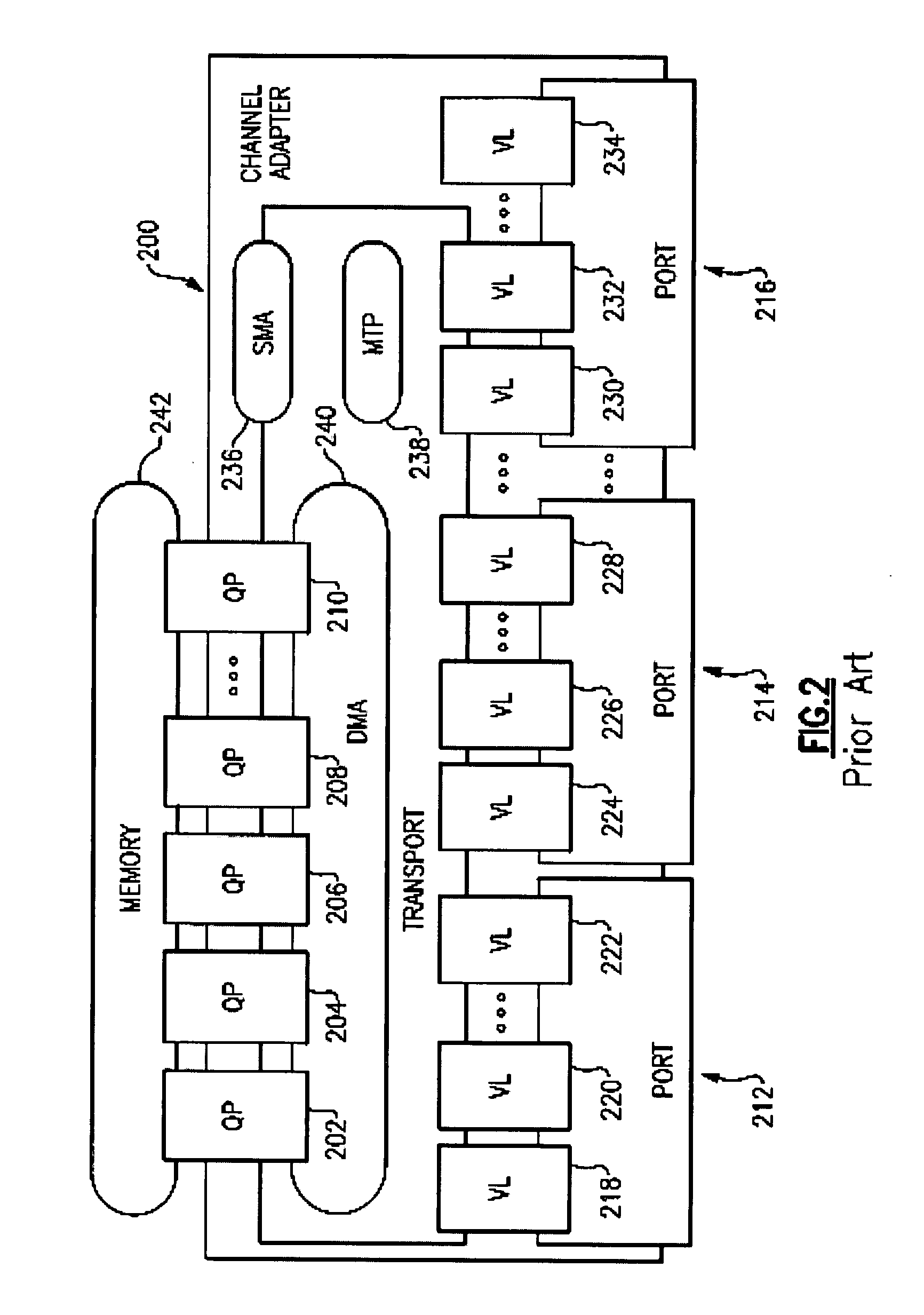Adaptive Low Latency Receive Queues
a low-latency, receive queue technology, applied in the field of computer system communication, can solve problems such as large clusters and breakdown of configuration types
- Summary
- Abstract
- Description
- Claims
- Application Information
AI Technical Summary
Benefits of technology
Problems solved by technology
Method used
Image
Examples
Embodiment Construction
[0028]FIG. 1 is a prior art diagram of a distributed computer system where exemplary embodiments may be implemented. The distributed computer system represented in FIG. 1 takes the form of a System Area Network (SAN) 100 and is provided merely for illustrative purposes. Exemplary embodiments of the present invention described below can be implemented on computer systems of numerous other types and configurations. For example, computer systems implementing the exemplary embodiments can range from a small server with one processor and a few input / output (I / O) adapters to massively parallel supercomputer systems with hundreds or thousands of processors and thousands of I / O adapters.
[0029]Referring to FIG. 1, a SAN 100 is a high-bandwidth, low-latency network for interconnecting nodes within a distributed computer system. A node is any component attached to one or more links of a network and forming the origin and / or destination of messages within the network. In the example depicted in...
PUM
 Login to View More
Login to View More Abstract
Description
Claims
Application Information
 Login to View More
Login to View More - R&D
- Intellectual Property
- Life Sciences
- Materials
- Tech Scout
- Unparalleled Data Quality
- Higher Quality Content
- 60% Fewer Hallucinations
Browse by: Latest US Patents, China's latest patents, Technical Efficacy Thesaurus, Application Domain, Technology Topic, Popular Technical Reports.
© 2025 PatSnap. All rights reserved.Legal|Privacy policy|Modern Slavery Act Transparency Statement|Sitemap|About US| Contact US: help@patsnap.com



